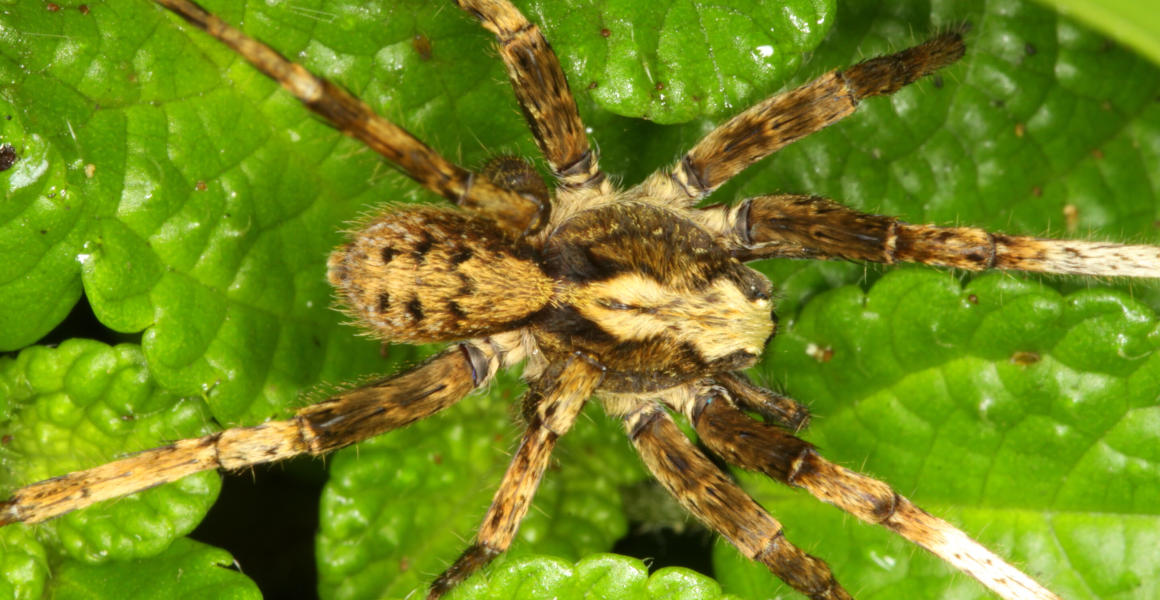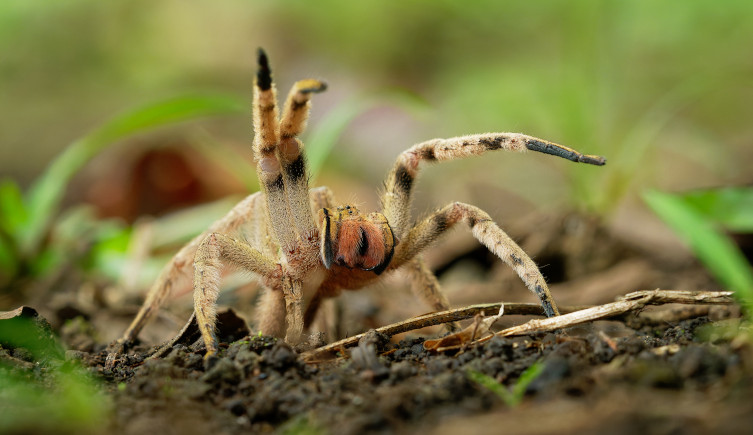A new group of spiders containing over 100 species has been named after the late David Bowie.
The tropical arachnids have been named after the musician to draw attention to the threats they face.

The Bowie spiders live in Asia, where species such as Bowie neukoeln are predators on a range of small animals. Image © Senckenberg/Jäger
A new group of spiders containing over 100 species has been named after the late David Bowie.
The tropical arachnids have been named after the musician to draw attention to the threats they face.
These spiders may not be from Mars, but they've become a part of the legacy of David Bowie.
A new genus of spiders has been named in honour of the musician, who died in 2016, on what would have been his 75th birthday. Dr Peter Jäger named the group after one of his heroes, having previously named spiders after figures including Greta Thunberg and Malala Yousafzai.
'When examining species from a predominantly Asian lineage in this family, I soon realised that they could not be assigned to any pre-existing genus,' Peter says. 'On the occasion of David Bowie's 75th birthday, I wanted to commemorate this incomparable artist who left us much too early.'
'However, what matters most to me here is the idea of conservation: we only protect what we know - and an attractive name is much more likely to be remembered.'
Other species given pop culture names include flies named after RuPaul, a fungus named after Spongebob Squarepants and a dinosaur named after Mark Knopfler.
The description of the new genus was published in Zootaxa.

Relatives of the Bowie spiders include Phoneutria wandering spiders, which have particularly potent venom. Image © Martin Pelanek/Shutterstock
The Bowie spiders are part of a family known as the Ctenidae, or wandering spiders, which mostly live in the tropics. They get their name from their behaviour, forgoing a web in favour of prowling forests for prey such as insects, reptiles and frogs.
To aid their hunting, wandering spiders have developed powerful venoms. One genus of the Ctenidae, Phoneutria, produces a venom which poses a lethal threat to humans, with males being more toxic than females.
One of the largest genera of these spiders are Ctenus, which contains over 200 species. These spiders are widely distributed across the world, but the features which set them apart are not readily apparent.
Peter describes the genus as a wastebasket taxon, which is a term used by taxonomists to describe groups made up of species that don't easily fit anywhere else.
These rebel taxa can sometimes be historical artefacts, describing groups of species that scientists in the past recognised for their similar appearance but through the advance of genetics have more recently been shown to be distant relatives.
Wastebasket taxons have come under pressure in recent decades as scientists seek to place species on a firmer footing.
While investigating Ctenus spiders, Peter found a number of oddities among Asian and Australasian members of the group that appeared to separate them from species in other areas of the world. Based on their unique features, he believes there is enough evidence to name the new genus.

Over 50 new species have been named after the songs of David Bowie. Image © Photobra|Adam Bielawski, licensed under CC BY-SA 3.0 via Wikimedia Commons.
Rising from the ashes of the wastebasket taxon, 49 Bowie spiders have been reclassified from Ctenus. Other species, meanwhile, have had previously unknown sex morphs described for the first time.
In addition, Peter has described 55 entirely new species, whose names draw on David Bowie's musical catalogue.
Species from the most northerly areas where the Bowie spiders live, such as Nepal, are named after songs from earlier in the musician's career such as B. ziggystardust and B. majortom.
Those from the central range represent songs from later in his career, such as B. letsdance and B. magicdance, while those from the most southerly areas, such as Papua New Guinea, are named after more recent songs such as B. blackstar.
The description of these new species, and the reclassification of others, helps to bring attention to a group of animals which are in jeopardy. The wandering spiders' rainforest homes are under threat from deforestation, while demand for exotic pets is harvesting spiders from the wild at an unsustainable rate.
Though they are yet to be formally assessed to determine their conservation status, the species' limited range and leaf litter habitat could also put them at increased risk of dying out as the planet warms.
'These endemic species, which live nowhere else in the world, are restricted to a very specific area and must be considered potentially Endangered,' Peter says. 'Even small changes in their habitat could lead to extinction.'
While pledges to end deforestation by 2030 may help these spiders to survive, whether Bowie spiders will go the way of the dodo remains to be seen.

We're working towards a future where both people and the planet thrive.
Hear from scientists studying human impact and change in the natural world.
Don't miss a thing
Receive email updates about our news, science, exhibitions, events, products, services and fundraising activities. We may occasionally include third-party content from our corporate partners and other museums. We will not share your personal details with these third parties. You must be over the age of 13. Privacy notice.
Follow us on social media